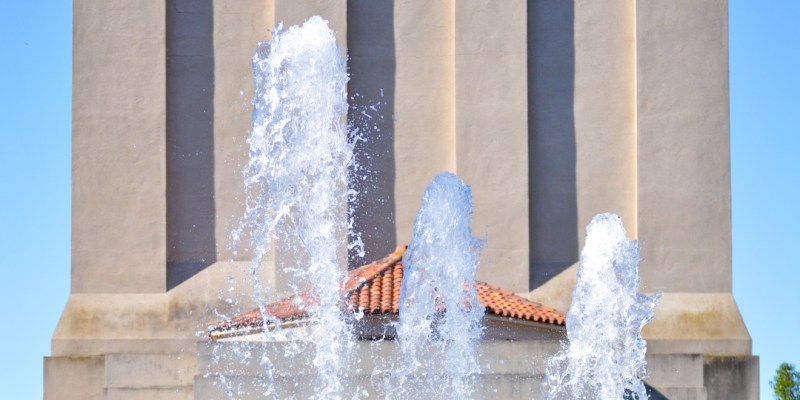Stanford is turning 18 of its fountains back on, two years after temporarily shutting them off to save water during a record-breaking statewide drought.
The fountains’ long dry spell ended today, as iconic water features such as White Memorial Fountain (“The Claw”) outside Stanford bookstore began to flow. All campus fountains will once again be running water by Monday.
While El Niño year weather patterns have increased rainfall in recent months, California’s drought is far from over: just two months ago, the state issued new “emergency” regulations extending restrictions on water use in urban areas to October of this year.
However, after assessing fountain water use, repairing various leaks and ensuring that all fountains have working water meters, Stanford has decided that the benefits of running fountains outweigh the costs — and that the fountains, which will account for 0.5 percent of campus-wide “domestic” or drinking water use each year, will not hinder progress on sustainability.
Collectively, the fountains take about 50,000 gallons of water to fill, as well as several thousands of new gallons each day to replace what is lost from evaporation and splashing.
Explaining the decision in Stanford News, Jack Cleary — associate vice president of academic projects and operations for Land, Buildings & Real Estate (LBRE) — said that the fountains are “important to the character of the campus.”
Cleary cited similar benefits last June, when water temporarily flowed in a few more prominent fountains for Commencement. All fountains were dry again by June 15.
Before they were shut off, many on campus valued the running fountains both for their aesthetic value and for their link to longtime Stanford traditions such as “fountain hopping.” State drought regulations would have permitted the fountains to continue running because they used recirculated water, but Stanford elected to shut them off in 2014 to limit non-essential water use, in one of its most visible efforts to reduce campus water consumption.
In 2014, LBRE launched the University’s Drought Response Plan, which — in addition to nixing fountain water — sought to cut domestic water use by an additional five percent by improving irrigation systems and fixing leaks, among other measures. The Office of Sustainability also began its Water Wise campaign promoting shorter showers and other conservation tactics for individuals.
At the time, Stanford had already reduced its domestic water consumption by 20 percent since the year 2000.
Since then, the Stanford Energy System Innovations (SESI) project has overhauled the campus energy system to reduce the University’s potable water use by 15 percent, in addition to cutting greenhouse gas emissions.
Together, these sustainability measures have resulted in a 25 percent decrease in Stanford’s domestic water use from 2013 to 2015.
Contact Hannah Knowles at hknowles ‘at’ stanford.edu.
